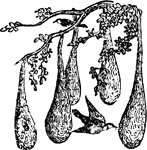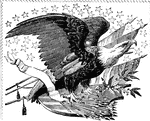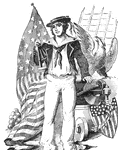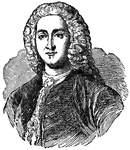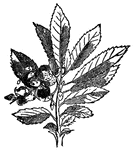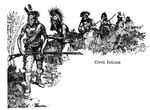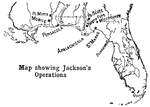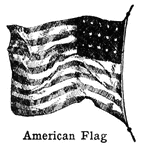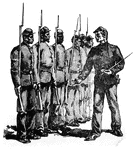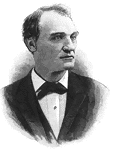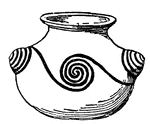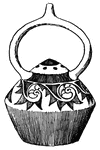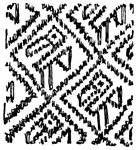
Vicuna
The vicuna is the smallest member of the camel family. It lives in elevated locations in South America.
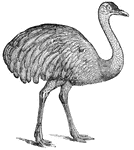
Ostrich
This south American ostrich can not fly, the wings being small; but it is a swift runner, equaling a…

Armadillo
Armadillos are native to South America and are classed with the edentata or toothless animals.
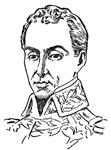
Simon Bolivar
(1783-1830) Simon Bolivar was a patriot for South American Independence. He fought against the Spanish…
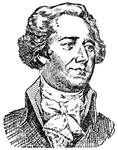
Alexander Hamilton
(1757-1804) Alexander Hamilton became captain of artillery at the beginning of the Revolution and was…

Revoltionary Flint-Lock Pistol
A revolutionary flint-lock pistol with a short, thick barrel. Requires reloaded after each shot.
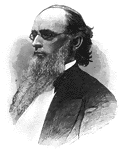
Paul Ansel Chadbourne
Portrait of Paul Ansel Chadbourne, an American educator. Born in New Berwick, ME., Oct. 21, 1823. Died…
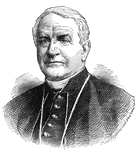
James Frederick Wood
An American Roman Catholic, prelate, born in Philadelphia, April 27, 1813; died there June 20, 1883.
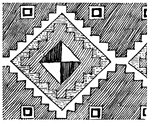
Bolivian Cloth
Bolivian fabric pattern sketched in the American Museum of Natural History in New York.

Mexican Terra-Cotta Head
Mexican Terra-Cotta Head sketched in the American Museum of Natural History in New York.
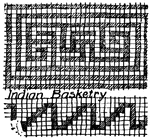
Basketry Patterns
Native American basketry patterns sketched in the American Museum of Natural History in New York.
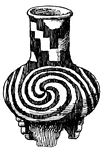
Mexican Jar with Spirals
Mexican jar with spiral design sketched in the American Museum of Natural History in New York.
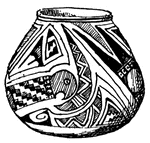
Mexican Jar with Serpant
Mexican jar with serpent design sketched in the American Museum of Natural History in New York.
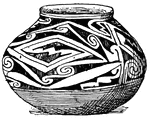
Mexican Bowl
Mexican bowl with spirals and zigzags sketched in the American Museum of Natural History in New York.
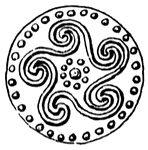
Peruvian Gold Disk
Peruvian gold disk sketched in the American Museum of Natural History in New York.

Peruvian Fabric Design
Peruvian fabric design sketched in the American Museum of Natural History in New York.
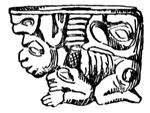
Mexican Pipe Bowl
Mexican stone pipe bowl sketched in the American Museum of Natural History in New York.
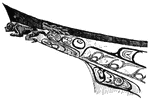
Alaskan War Canoe
Prow of an Alaskan war canoe sketched in the American Museum of Natural History in New York.

Alaskan War Canoe
Stern of an Alaskan war canoe sketched in the American Museum of Natural History in New York.
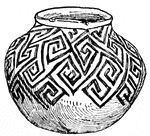
Mexican (Tusayan) Jar
Tusayan jar (Mexico) sketched in the American Museum of Natural History in New York.
!["[African American] drivers of the baggage train attached to General Pleasonton's Cavalry brigade watering their mules in the Rappahannock. General Pleasonton's cavalry was attended by a very efficient forage brigade, consisting of mules and [African American] riders. Our sketch represents their drivers taking them to water at the river. The hard work these animals will endure is something wonderful, and justifies the high estimation in which they are held in the army." — Frank Leslie, 1896](https://etc.usf.edu/clipart/11000/11025/baggagetrain_11025_mth.gif)
Baggage Train
"[African American] drivers of the baggage train attached to General Pleasonton's Cavalry brigade watering…
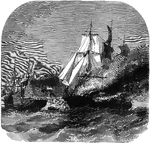
Harvey Birch
"Burning of the American merchantman "Harvey Birch," of New York, Captain Nelson, in the British Channel,…
!["First and last review of the First Regiment, South Carolina [African American] Volunteers, on Hilton Head, S. C., under Colonel Fessenden, U. S. A., June 25th, 1862. Our correspondent at Hilton Head wrote us: "I witnessed the parade entire, as well as the company drills in the manual of arms, etc., afterward, and I must acknowledge my complete surprise at the discipline and even vim evinced by the sable crowd. Dressed in the regulation uniform of the United States Army, tall and strong men generally speaking, they, considering that the regiment had not been fully armed but about ten days, spoke well for officers and men."" — Frank Leslie, 1896](https://etc.usf.edu/clipart/11000/11043/1stregiment_11043_mth.gif)
First Regiment
"First and last review of the First Regiment, South Carolina [African American] Volunteers, on Hilton…
!["General Lorenzo Thomas, born in Newcastle, Del., October 26th, 1804, died in Washington, D. C., March 2nd, 1875, was graduated from the United States Military Academy in 1823; served in the Florida and Mexican Wars, and received the brevet of lieutenant colonel for gallantry at Monterey. On the 7th of May, 1861, he was brevetted brigadier general, and made adjutant general of the army on August 3rd, with the full rank of brigadier general. He served until 1863, when he was intrusted for two years with the organization of [African American] troops in the Southern States. He was brevetted major general, United States Army, on March 13th, 1865. He was retired in 1869." — Frank Leslie, 1896](https://etc.usf.edu/clipart/11000/11059/thomas_11059_mth.gif)
Lorenzo Thomas
"General Lorenzo Thomas, born in Newcastle, Del., October 26th, 1804, died in Washington, D. C., March…
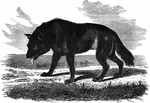
American Wolf
"The common wolf is of the size of a large dog; its usual color is a yelowish gray: the hair strong…
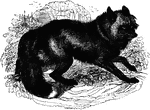
American Cross Fox
"The size is that of the common fox, the fur exceedingly long, soft, and rich; and, although presenting…
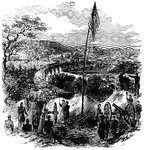
Bouquet Battery
"The Bouquet Battery, commanding the viaduct over the Patapsco River, on the Baltimore and Ohio Railroad,…
!["A detachment of the First South Carolina [African American] Federal Volunteers, under the command of Colonel Beard, repelling the attack of Confederate troops in the vicinity of Doboy River, GA." —Leslie, 1896](https://etc.usf.edu/clipart/11200/11251/doboy_11251_mth.gif)
Doboy River
"A detachment of the First South Carolina [African American] Federal Volunteers, under the command of…
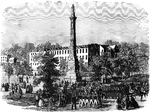
Pulaski Monument
"Review of Confederate troops on their march to Virginia, in front of the Pulaski Monument, Monument…
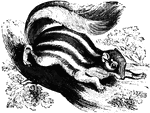
American Chipmunk
Tamia Striata. "It is about five inches long, and of a fawn-color above, striped wth five brown and…
!["The Plantation Police, or Patrol, was an institution peculiar to the Slave States. It was a semi-military organization, raised and supported by the planters, but recognized by the old State authorities. Their principal duty was to visit the various plantations and patrol the roads at night, arresting all [African Americans] and others not having proper passes. The war, the President's proclomation, and the actual possession of most of the State of Louisiana by the Federal authorities, rendered these patrols doubly rigorous. Some of the [African Americans] submitted reluctantly. The [African American] in the foreground is a speciman of this class. He seems to yield to the superior force of a tottering power, satisfied that his day is at hand; others show the obsequious, submissive stamp- the [African American] satisfied with his lot if he is clothed and fed."— Frank Leslie, 1896](https://etc.usf.edu/clipart/11600/11643/plant-police_11643_mth.gif)
Plantation Police
"The Plantation Police, or Patrol, was an institution peculiar to the Slave States. It was a semi-military…
!["A New Year's Day Contraband Ball at Vicksburg, Miss. The [African Americans] preserve all their African fondness for music and dancing, and in the modified form which they have assumed here have given rise to [African American] dancing and melodies in our theatres, a form of amusement which has enriched many."— Frank Leslie, 1896](https://etc.usf.edu/clipart/11600/11644/contra-ball_11644_mth.gif)
Contraband Ball
"A New Year's Day Contraband Ball at Vicksburg, Miss. The [African Americans] preserve all their African…
!["A detachment of the First South Carolina [African American] Federal Volunteers, under command of Colonel Beard, in the United States transport steamer <em>Darlington</em>, picking off Confederate sharpshooters concealed in the trees on the banks of the Sapelo River, Ga."— Frank Leslie, 1896](https://etc.usf.edu/clipart/11600/11647/aa-volunteer_11647_mth.gif)
African American Volunteers
"A detachment of the First South Carolina [African American] Federal Volunteers, under command of Colonel…

Centreville
"View of the town of Centreville, Va., with the battlefield of Bull Run, Bull Run Mountains, Thoroughfare…
Culpepper Courthouse
"Culpepper Courthouse, or Fairfax, capital of Culpepper County, Va. This pretty little place, more frequently…

